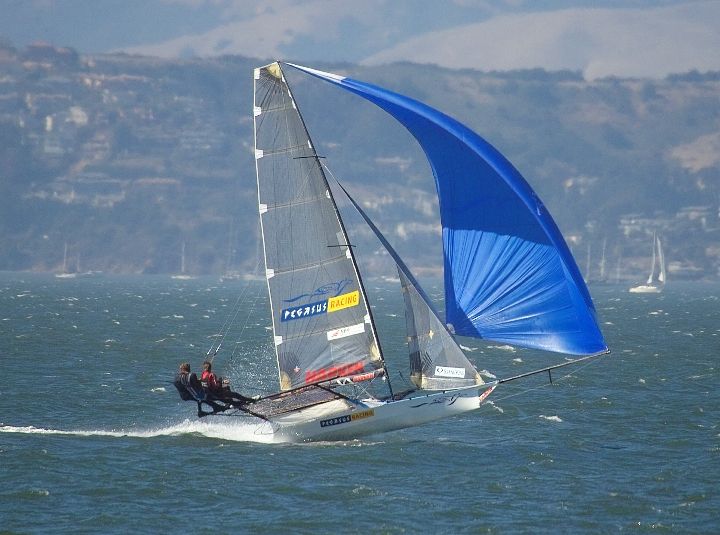Sailing Skiffs
Sailing Skiffs are the high performance, incredible high end of sailing. They are the fastest, lightest, toughest sailing boats you will ever find and are usually only able to be handled by top sailors with years of training behind them.
Suffice to say, they go very fast and only an experienced sailor or someone with a very calm demeanor will be able to sail them without having their minds blown away by the shock and awe that is a skiff.
Some can go in excess of double the true windspeed when off wind and up to 8 knots upwind and planing just like in the picture.

They are not for the light hearted or for the cheapstakes with skiffs costing significantly higher than the average sailboat price due to their high-tech, light-weight and high performance design. They usually use cutting edge materials such as carbon nanotubes coiled into carbon fibre to make the mast and stays, due to the enormous stress placed upon it by the wind.
Skiffs are usually very difficult to sail and the helm and crew need high strength, agility and skill if they are able to operate this extreme class of boat with any sense of control.
Some of these boats, including the Olympic classes, have more than 2 crew, since they need more weight to keep them stable in high winds, because the boats themselves are so lightweight.
Skiffs also have trapezes and 'wings' (rods that are connected to the boat, on which a trapezing sailor stands on to balance the boat) in order to help balance the boat and increase the enjoyment factor.
If you are just starting sailing, don't expect to be able to get in a skiff and sail it like any other boat. The skiff to say a GP14 is like a supersonic Concorde verses a little Cessna with a propellor. Wait till your ready and then get prepare for the time of your life!
Return from Sailing Skiffs to Extreme Sailing
Return from Sailing Skiffs to Started Sailing

